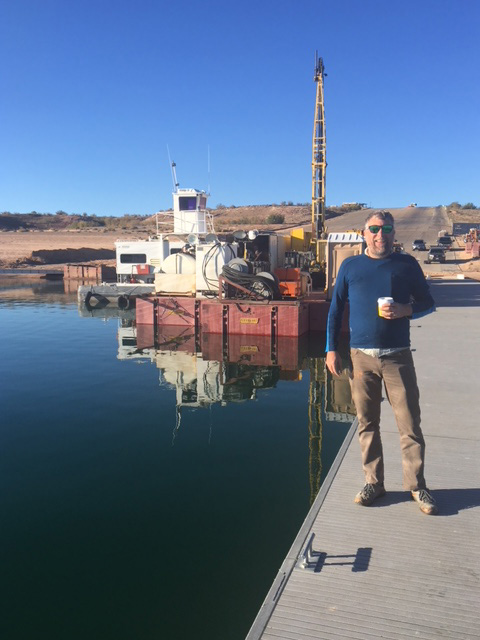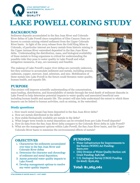Sediment deposits accumulated in the San Juan River and Colorado River deltas of Lake Powell since completion of Glen Canyon Dam are known to contain mining-related sediment from the Upper Colorado River basin. Of particular interest are heavy metals from historic mining in the Upper Animas River watershed deposited in the San Juan River delta.
Understanding the distribution, mass, and biological availability of these metals to living organisms is critical for understanding the possible risks they pose to water quality in Lake Powell and what mitigation measures, if any, are necessary and feasible.
The makeup of Lake Powell’s major river deltas are currently unknown, but they continue to accumulate numerous metals, including arsenic, cadmium, copper, mercury, lead, selenium, and zinc. Mobilization of these metals into Lake Powell in the future could impact or threaten water quality, human health, and aquatic life.
This project will improve scientific understanding of the concentration, mass loading, distribution, and bioavailability of metals through the total depth of sediment deposits in Lake Powell to help determine potential impacts to water quality and associated beneficial uses including human health and aquatic life.
Update April 25, 2019
The U.S. Geological Survey (USGS) completed sediment coring work on Lake Powell in early December 2018. The core extraction was a complete success, with an extraction of 40 individual cores totaling 494 meters from the Colorado River and San Juan River deltas of Lake Powell.
Sediment cores were packaged and shipped to the National Lacustrine Core Facility in Minnesota where they are currently being analyzed. Whole cores have been scanned at this point, providing information on sediment density, acoustic wave velocity, electrical resistivity, and magnetic susceptibility. The USGS team traveled to the lab in March 2019 where they assisted with splitting, imaging, and sampling the cores. Samples were taken approximately every meter and freeze-dried to facilitate immediate and future analysis.
The next steps in the process will be to summarize descriptive core data in a report that will be made available in Fall 2019.
Update November 21, 2018
The U.S. Geological Survey (USGS) field crew has been working on the San Juan Arm of the San Juan River since the team mobilized the barge and equipment at Lake Powell’s State Line Ramp on November 5, 2018. USGS has taken its first core samples, tested its equipment, and conducted detailed sampling at locations where material from the Gold King mine spill may have been deposited into the lake and river deltas.
The crew gathered provisions at the Bullfrog Marina after completing work on the San Juan Arm, including two turkeys for a “family” Thanksgiving on Lake Powell. USGS will continue up the Colorado River Delta for 10 days to conduct sampling that corresponds with the work completed on the San Juan Arm before heading back to Wahweap Bay in Page, Arizona.




